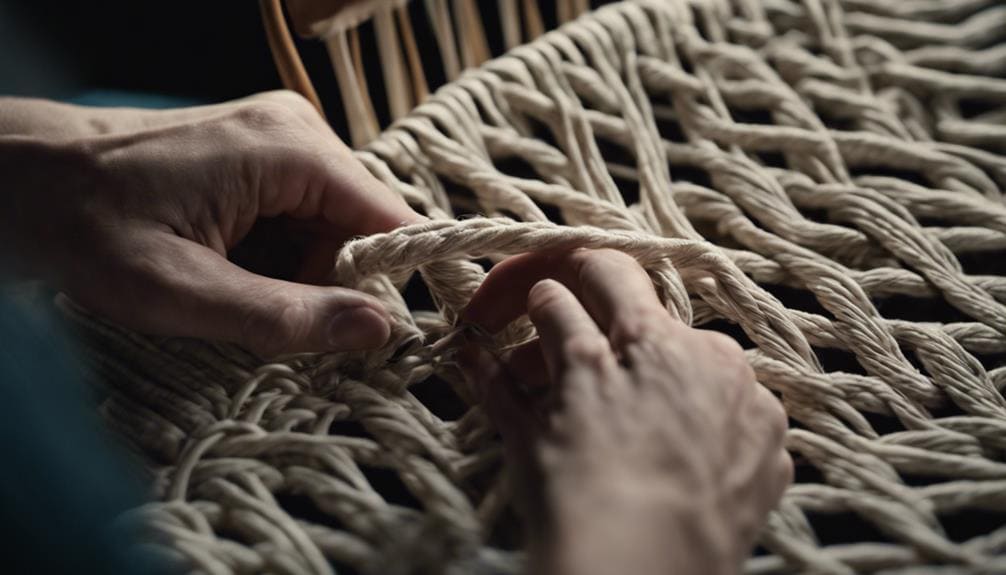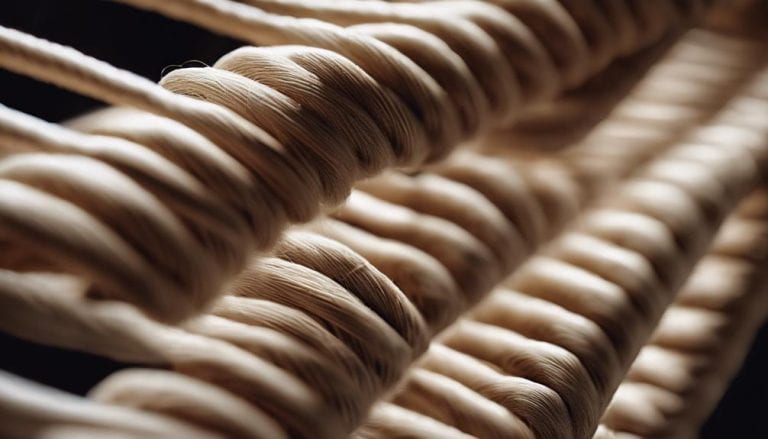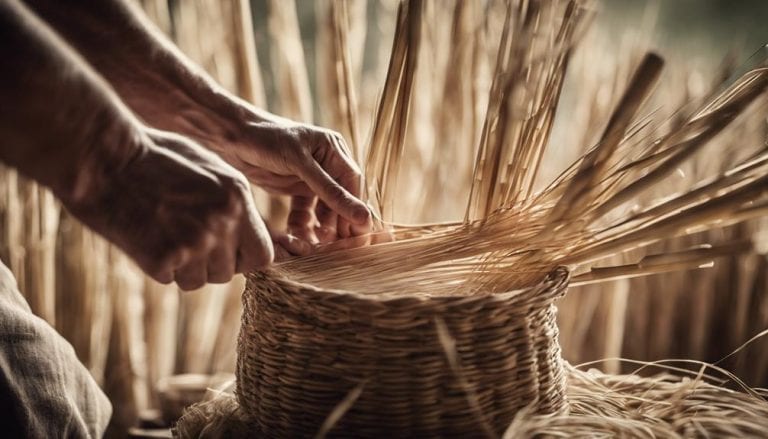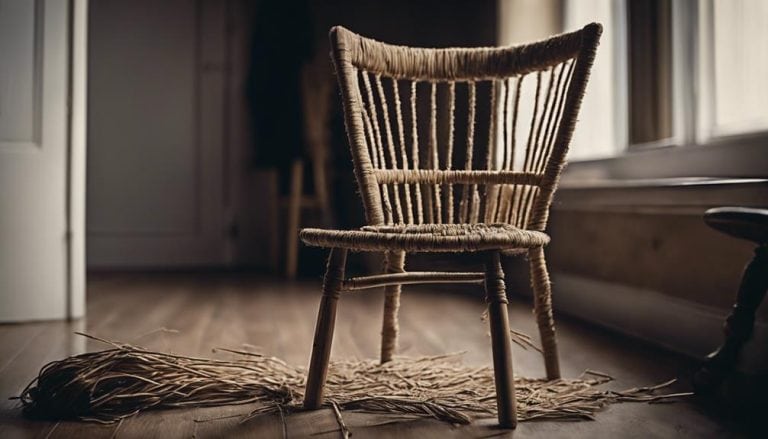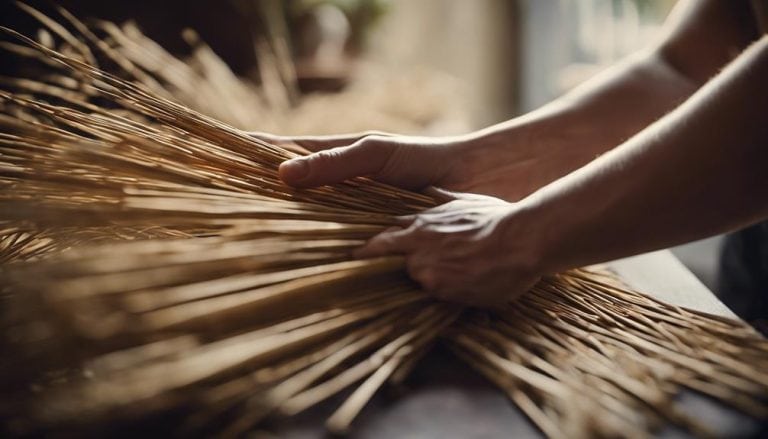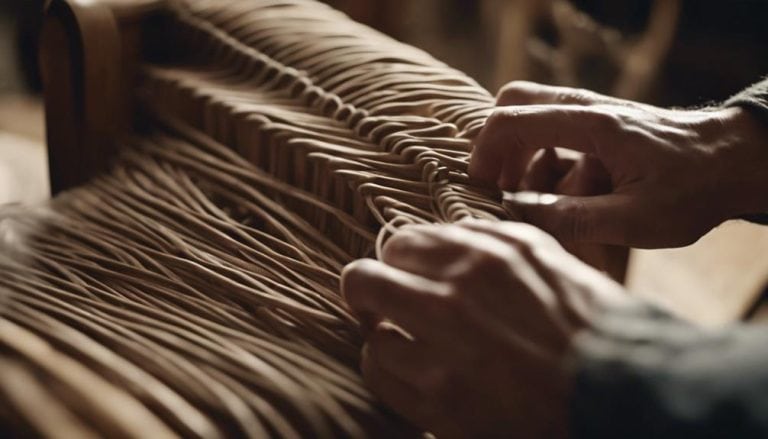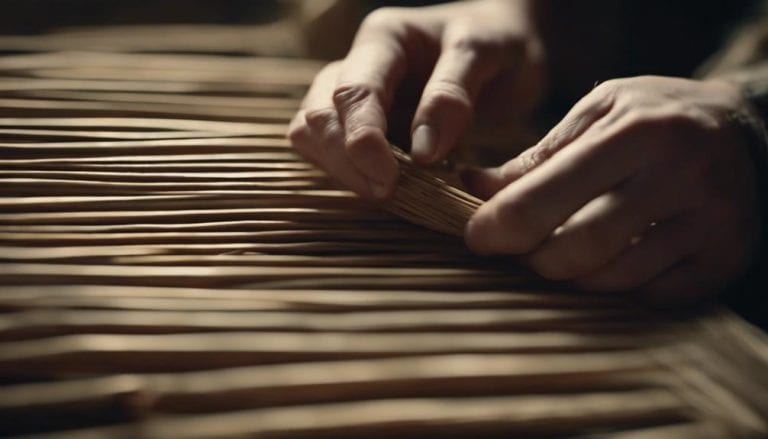Danish Cord for Beginners in Crafting
As they say, ‘Rome wasn’t built in a day.’ Exploring the realm of Danish Cord crafting for beginners can be an eye-opening journey into the world of traditional craftsmanship with a modern twist. Discover the secrets behind this timeless material and how it can elevate your crafting projects to new heights. Whether you’re a novice looking to start a new hobby or a seasoned crafter wanting to expand your skill set, Danish Cord offers something intriguing. Let’s unravel the possibilities together.
For beginners in crafting, Danish Cord is a versatile material used in traditional chair weaving techniques, offering a unique and rewarding experience. Working with Danish Cord can open up a world of creative possibilities in crafting projects.
Key Takeaways
- Danish Cord offers elegance and durability in furniture crafting.
- Consider weaving patterns, durability, and quantity for successful projects.
- Essential tools like hammers, pliers, and scissors are crucial.
- Utilize cow-hitch knot and spacing techniques for optimal results.
What Is Danish Cord?
Danish cord, a versatile weaving material crafted from twisted paper strips, adds a touch of elegance and durability to designer furniture pieces. Regarding furniture design, Danish cord is a staple for creating stylish and long-lasting chair seats. The intricate weaving technique provides a visually appealing aesthetic and ensures a sturdy and comfortable seating experience.
Danish cord stands out for its unique blend of sustainability and resilience in crafting and furniture making. As a material specifically designed for chair seats, it offers strength and flexibility, making it ideal for everyday use. The history of Danish cord is deeply rooted in mid-century furniture design, where it became synonymous with iconic creations by renowned designers like Hans Wegner. Embracing Danish cord in your crafting endeavors elevates the quality of your work and pays homage to a rich tradition of design excellence.
When choosing materials for your next furniture project, consider Danish cord’s timeless appeal and lasting quality. Its weaving prowess and durability make it a standout choice for creating elegant and strong furniture.
Choosing the Right Danish Cord
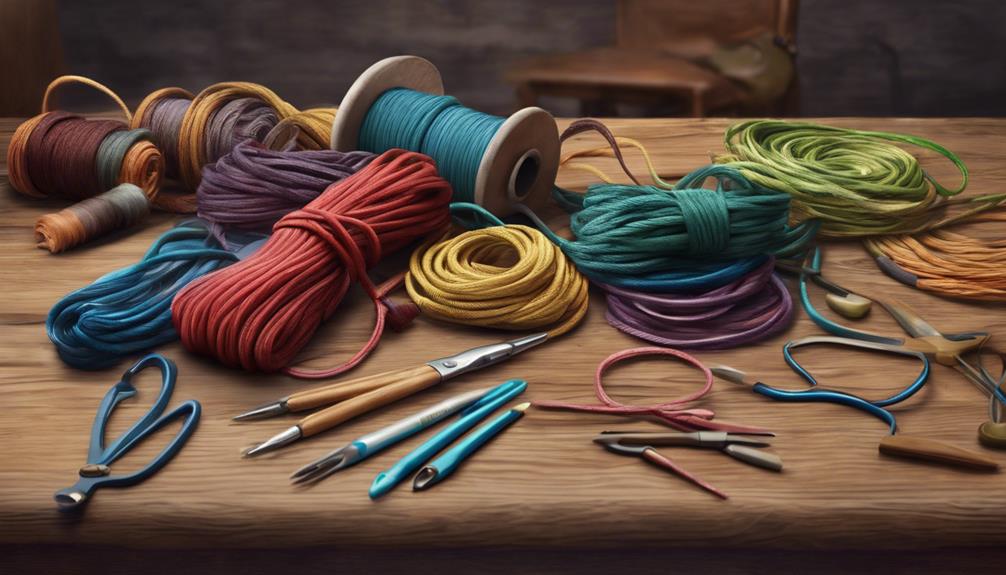
As we select the ideal Danish cord for our crafting projects, it’s crucial to understand the distinctions between laced and unlaced varieties to achieve the desired weaving pattern and durability.
When choosing the right Danish cord, consider the following:
- Weaving Pattern: The laced Danish cord is perfect for intricate weaving patterns that require a more structured look, while the unlaced variety offers a more organic and relaxed finish.
- Aesthetic Outcome: Determine whether you want your seat weaving project to have a tight and uniform appearance (laced Danish cord) or a looser and more casual look (unlaced Danish cord).
- Durability: Laced Danish cord provides extra strength and sturdiness, which is ideal for projects that will experience heavy use over time.
- Quantity Needed: Danish cord is typically sold by weight, with around 2 pounds often required to weave a single chair seat.
- Visual Appeal: The right Danish cord choice is crucial for achieving a visually appealing and successfully woven outcome in your crafting endeavors.
Selecting the appropriate Danish cord will set the foundation for a remarkable and resilient seat weaving project.
Basic Tools for Danish Cord Crafting
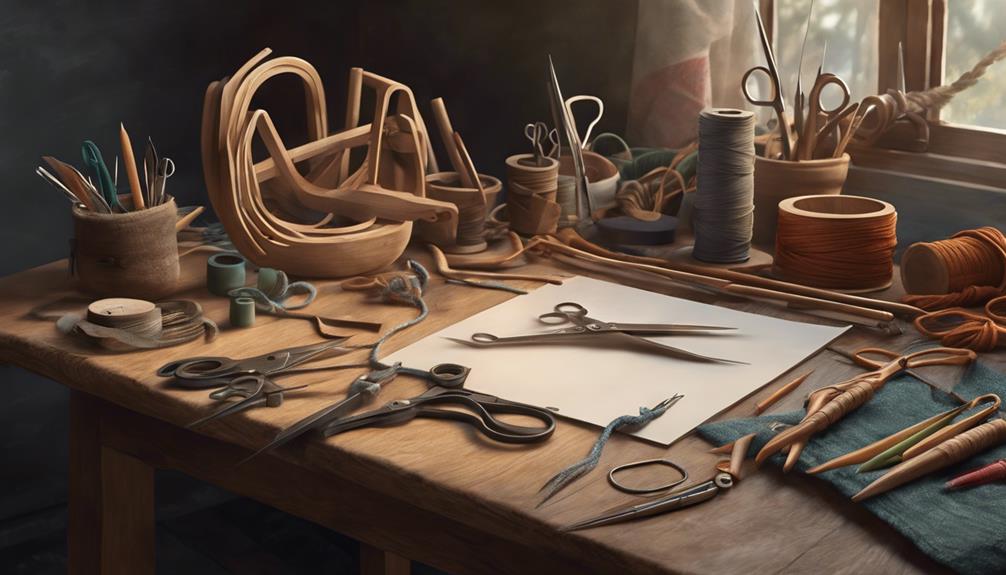
Gathering the essential tools for Danish cord crafting is key to laying a strong foundation for your weaving journey. When crafting with Danish cord to weave the back of a chair, having the right tools is crucial.
A hammer is essential for securing the cord firmly in place, ensuring a durable finish. Needle-nosed pliers come in handy for navigating tight spots and intricate patterns, allowing for precise weaving. Scissors are necessary for trimming excess cord neatly, providing a polished look to your work.
Don’t forget gloves to protect your hands during the weaving process, ensuring comfort as you create your masterpiece. Additionally, a wood block is indispensable for tightening weaves and achieving a professional result.
These tools are fundamental for beginners to effectively use Danish cord and craft beautiful woven designs for chair backs. With the correct tools at your disposal, your Danish cord crafting journey is set to be empowering and fulfilling.
Techniques for Weaving Danish Cord
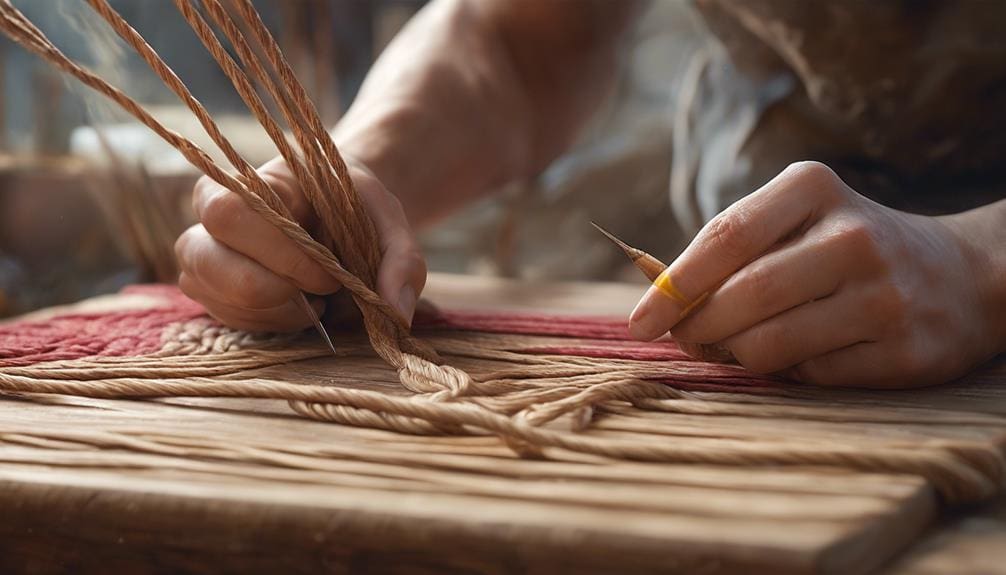
Embarking on the weaving journey with Danish cord involves mastering various techniques to create intricate and durable designs for chair backs. When diving into Danish cord weaving, these techniques will be your guide to success:
- Utilize the cow-hitch knot: This knot secures the warp to rails, ensuring a dense and long-lasting Danish cord seat.
- Employ L-shaped nails: These nails are essential for securely attaching Danish cord seats, providing stability and strength.
- Master the cow-hitch knot: Perfect this essential technique in Danish cord weaving to prevent gaps and lifting in the warp.
- Work with double rails: Allow the cord to change direction seamlessly without needing additional nails, enhancing the efficiency of your weaving.
- Experiment with spacing techniques: Try out different spacing methods to achieve optimal weaving results, elevating the beauty and durability of your Danish cord creations.
With these techniques under your belt, you’re on your way to mastering the art of Danish cord weaving with finesse and precision.
Common Beginner Mistakes to Avoid
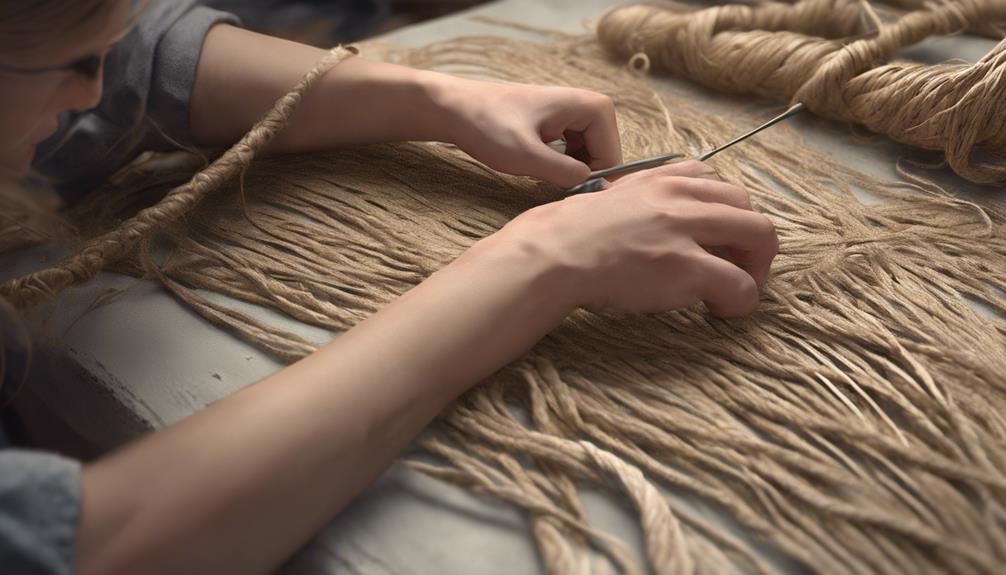
Let’s avoid these common beginner mistakes to ensure a smooth and successful Danish cord weaving experience. When diving into Danish cord seat weaving, one crucial error to avoid is not securing the warp cords properly to the rails. This misstep can result in a loose and unstable weaving structure that compromises your project’s final look and durability.
Additionally, maintaining consistent spacing between the warp cords is essential to achieving an even and attractive weaving pattern. Paying attention to tension while weaving is another key factor in preventing the finished piece from sagging or bulging.
Choosing the right type and thickness of Danish cord is vital, as using the wrong kind can significantly impact the overall appearance and strength of your weaving. Lastly, always remember to follow and document the original weave pattern properly. Neglecting this can make it challenging to replicate or rectify mistakes during the weaving process.
Creative DIY Projects With Danish Cord
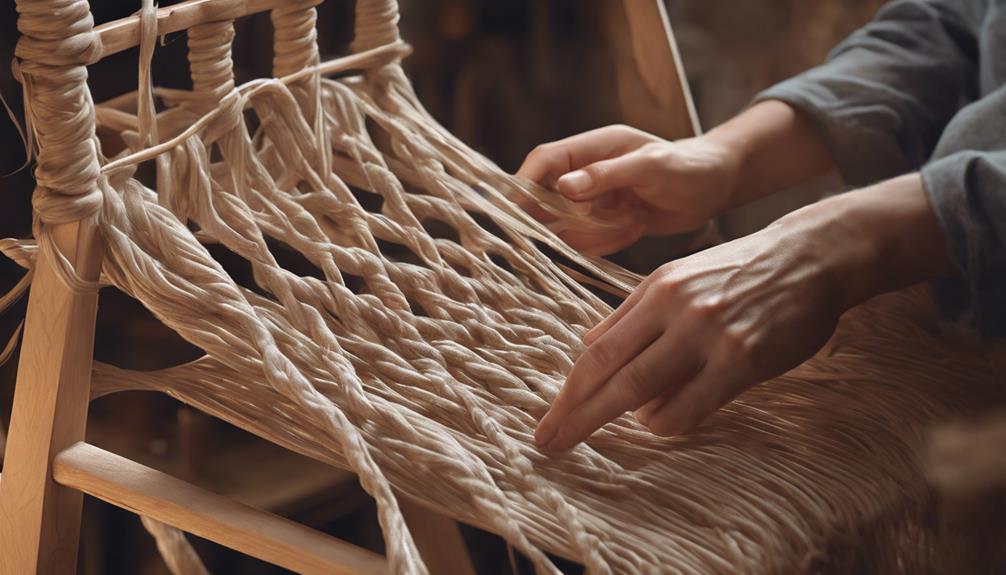
Crafting with Danish cord opens creative possibilities for designing unique and functional DIY projects. When working with Danish paper cord, exploring different weaving techniques can lead to stunning creations for home decor. Here are five inspiring DIY projects you can try:
- Weave intricate coasters using Danish cord in various colors to add a touch of elegance to your table settings.
- Create stylish placemats by experimenting with different weaving patterns and designs for a personalized dining experience.
- Craft decorative wall hangings by combining Danish cord with other materials, such as wood or metal, to make a statement piece in any room.
- Design plant pot holders that are both practical and visually appealing, perfect for adding a natural touch to your living space.
- Make unique keychains by weaving Danish cord into fun shapes or patterns, offering a personalized touch to your everyday items.
Unlock your creativity with Danish cord and embark on a crafting journey filled with endless possibilities for beautiful home decor and personalized gifts.
Frequently Asked Questions
Which Is Better Laced or Unlaced Danish Cord?
Laced Danish cord, with its precise cord tension and polished aesthetics, is better suited for a refined finish. Unlaced cord offers a more relaxed vibe, adding character to furniture. Consider durability, comfort, and maintenance needs when choosing between the two.
What Is a Danish Cord Used For?
Using Danish cord in crafting offers endless creative possibilities. From weaving intricate patterns to designing unique projects, the material’s durability and longevity are unmatched. With the right techniques and a few tips and tricks, the benefits are truly rewarding.
How Much Danish Cord Do I Need?
Calculating requirements for Danish cord involves considering chair design and weaving patterns. Estimating costs accurately ensures sufficient supply. Color options vary, but starting with a 2-pound roll is wise. Avoid beginner mistakes by purchasing quality cord from reliable suppliers.
What Are the Different Types of Danish Cord Weaving?
I love exploring the different types of Danish cord weaving. From laced to unlaced techniques, the variety is endless. I enjoy experimenting with colors, mastering basic techniques, creating unique designs, and ensuring proper maintenance for longevity.
Conclusion
After diving into the world of Danish cord crafting, I’ve discovered the beauty and versatility of this traditional material. Through practice and patience, I’ve mastered weaving techniques and learned to avoid common mistakes.
The possibilities for creative DIY projects with Danish cord are endless, and I’m excited to continue exploring and pushing the boundaries of what can be achieved with this unique medium. Join me in preserving the art of chair making and connecting with a global community of crafters.

